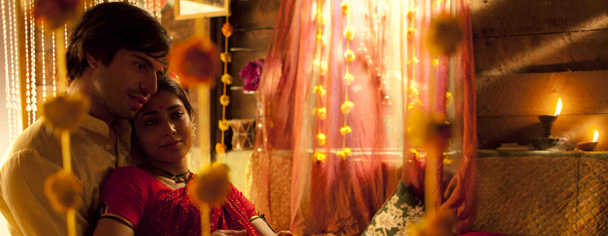Midnight’s Children
Metastasizing war, lust, hunger, religion, nuclear bombs, forced sterilization, annihilation, and love. And hope. And second chances.
Plot summary
Midnight’s Children follows the destinies of a pair of children born at the stroke of midnight on August 15, 1947, the very moment that India claimed its independence from Great Britain — a coincidence of profound consequence for both.

Aug 15, 1947, midnight, a new country takes its first breath, an ancient newborn. But instead of the creation of an India, solid and whole, independence created a Brahma-headed, Shiva-tempered multiplicity of Indias; all the disparate and fractious elements—language and identity, religion and identity, food and identity —previously contained by the cell membrane of the Raj (now dissolved), spilled out—old eastern castes, new western classes, self-defining mythology, terracentrism, political opportunism—all without the unifying (and, granted, imperious) colonial voice to help make sense of it. ‘Something ending, something being born,’ Rushdie says in the narration. And something being born, and quickly ending.
Aug 15, 1947, midnight, a child is born, or two, actually, along with 999 others in that fairy tale hour. Encapsulating the confusion and conflict of the country that shares their birth, these children are an amalgam of identities and allegiances, of old and new. Saleem Sinai (Darsheel Safary as Saleem the Younger, Satya Bhabha as Saleem the Elder) is born with a dripping ‘cucumber’ of a nose and as his name—a collision of Islam and Judaica—indicates, he is the Peacemaker, though born Of Sin. In his veins runs the blood of both the British aristocracy and the Delhi slum; again, like the country to which he is twinned. He is switched at birth by a Christian socialist nurse (‘Let rich be poor, the poor, rich’), and given a life of wealth, while his nemesis, Shiva (Siddharth), The Destroyer, violent, is fated to a life of poverty and struggle. In the trinity of the good, the bad, and the ugly, Shiva is the bad; Saleem is the good, and the ugly.
The 1001 children born in that hour of creation and destruction are Midnight’s Children, all with varying magical powers, from levitation to time travel to the ability to change sex. Saleem’s gift? He’s the great conciliator, the great mediator, using his honker of a nose to telepathically conjure up the Midnight’s Children with just a sniff, a nasal underground railway to bring them all together. It’s ‘better than all-India radio,’ he says. And Shiva’s gift? Killer knees. Literally. He’s the fighter, the muscle, the tendon in the brain devoted to simian aggression.
All the characters are ciphers, anthropomorphizing principles, philosophies, or conceits, as in all good magical realism. They are bigger, and more juicy, than real people, as they only have one trait—being archetypes—to worry about. But that’s the magic part, the fable-like language that’s so beguiling and that adumbrates and highlights the realism part. Yes, these are fairy tale characters, but they are embroiled in very real events of history, Pakistan and India ‘washing each other at birth in each other’s blood.’
In Salman Rushdie’s Midnight’s Children (the book, and the film, since he’s taken such ownership of it, writing the screenplay and supplying voice to the narration), things get cleaved. Loyalties get cleaved, identities get cleaved, an empire gets cleaved, a country gets cleaved, and then cleaved again. But all this cleaving is really the same cleaving, with many faces like a mercurial god. It is essentially about one thing: the soul of India. The plot then, considering: metastasizing war, schisms of family to mirror the schisms of topography, lust, hunger, upheaval, religion, nuclear bombs, forced sterilization, annihilation, and love. And hope. And second chances.
More than just illustrating incidents from an expansive experience of a great expansive novel, like terse postcards from a long journey (the film Love In The Time of Cholera springs regretfully to mind) Rushdie’s script and Mehta’s direction manage to capture some of the exquisite tapestry of the book, some of the fabulist sense of mischief, and a lot of the mythic color. For people who loved the book, the Booker of Bookers, this will be nice visual correlative. Unfortunately—and through no fault of its own, it’s the temporal constraints of the medium—it’s not The Film of All Films.











COMMENTS